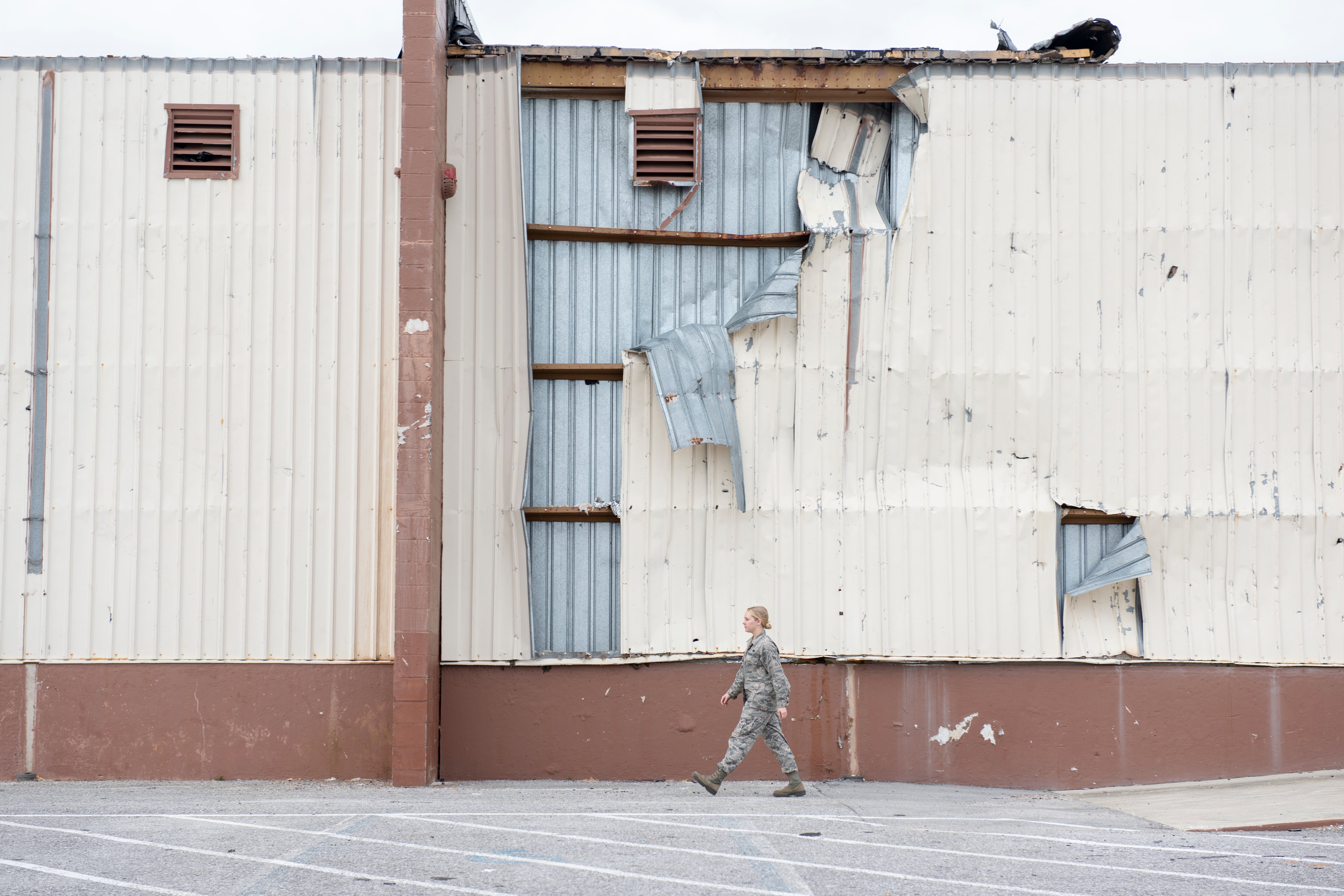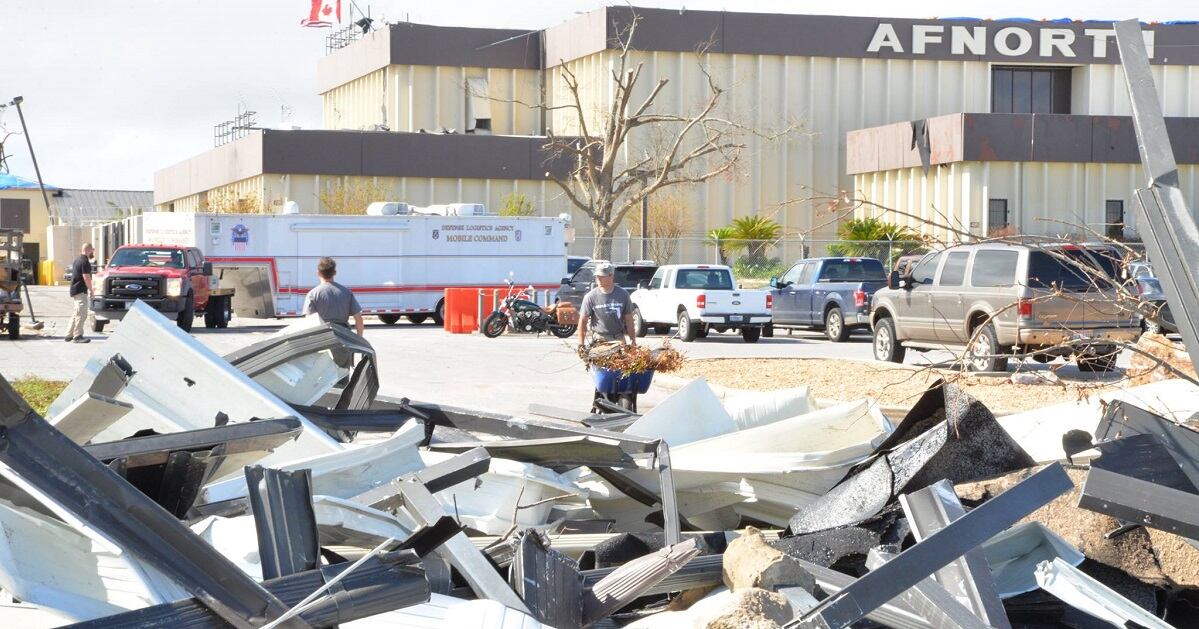President Donald Trump plans to visit Tyndall Air Force Base in Florida on Wednesday afternoon for an update on recovery efforts en route to a “Make America Great Again” political rally in nearby Panama City Beach.
Currently, the news is not good, either for Tyndall or the surrounding communities. Both desperately need an infusion of cash.
RELATED

Almost all 700 structures on the base were damaged by Hurricane Michael, a Category 5 storm, when it roared through the base Oct. 10 with sustained winds of 160 mph. Roughly one-third of those buildings were destroyed, and 11,000 base personnel were evacuated.
The Air Force has spent more than $450 million on recovery efforts at Tyndall, which service officials hope to build up as a so-called “installation of the future,” which will include three F-35 squadrons and an MQ-9 Reaper wing.
But the recovery effort began lapsing May 1 due to a lack of funds. All new work has been halted, deferring 121 projects slated to begin after May 1, said John Henderson, assistant secretary of the Air Force for installations, environment and energy.
“These are repair projects for facilities,” he said. “It’s doing initial repairs on roofs, doing mold remediation, completing the demolition on buildings that are partially demolished and have standing [water]. We had 29,000 acres of trees. Seventy-five percent of those trees are knocked over and they’re drying up and becoming a risk — a fire risk.”
Until repair projects receive funding, “those facilities will essentially just continue to decay,” he said. “It will leave facilities that are partially destroyed in that state. So in other words when the wind comes up, we still have debris blowing off those buildings until we get them demolished.”

Legislation in the House and Senate would provide much-needed funding for hurricane and flood recovery efforts, including the flood damage at Offutt Air Force Base in Omaha, Nebraska, but those bills have stagnated over how much disaster aid to provide Puerto Rico.
The service estimates it will need $1.2 billion in fiscal 2019 and $3.7 billion in fiscal 2020 and 2021 for recovery at Tyndall and Offutt.
It is not clear whether the president plans to visit the surrounding communities, although he will have to pass through them en route to his rally.
Residents in the part of the Florida Panhandle devastated by Hurricane Michael hope Trump gets a glimpse of the continued suffering in the region.
Area officials said the communities that were in the storm’s bull’s-eye — Panama City, Mexico Beach and surrounding Bay County — had received about $1.1 billion in federal aid through mid-April. Mountains of debris have been removed, traffic lights work again and countless homes and businesses have been repaired.
Yet the relief bill stalemate in Washington has left communities still waiting on other funding, and many structures and neighborhoods appear much as they did the day after the storm with trees still atop splintered homes and blue roofing tarps flapping in the breeze. Tent cities have sprung up in some places. In others, people are living in fractured houses or mobile homes.
Florida Republicans have warned the president not to show up for the rally without a plan to announce new aid for the region, according to a report in Politico. “As of late Tuesday the Trump administration had made no guarantees, according to three people with knowledge of the president’s plans,” Politico reported.
Earlier this year, U.S. Rep. Neal Dunn, the Republican who represents the district, introduced a measure to spend $4.5 billion rebuilding Tyndall by 2023, according to the Tampa Bay Times.
For the Air Force, reverberations from the funding shortfall are beginning to be felt across the service.
In addition to the $1.2 billion in new funding it needs for Tyndall and Offutt, it also needs permission to move $3.4 billion around to pay for other needs.
If the Air Force doesn’t get that funding, it will be forced to ground combat aircraft, defer at least 61 facility repair projects at various bases and halt certain aircraft maintenance actions. Key weapons programs — like hypersonic weapons development — would be slowed down and become more costly, and non-deploying squadrons may have their flying hours stripped away, warned Air Force Secretary Heather Wilson in a March 6 memo obtained by Defense News, a sister publication.
Staff writers Valerie Insinna and Stephen Losey, and The Associated Press, contributed to this report.




